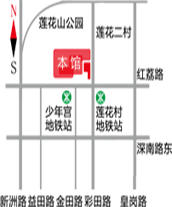
- Reproducing the Spirit of the Three Rivers Source
-
Li Huanmin
Wu Changjiang has been climbing the spiritual highland of the Qinghai Tibet Plateau for thirty years. He said, "In the dark, I have a past life agreement with the Qinghai Tibet Plateau.". He goes on a pilgrimage to the birthplace of the Yangtze River, Yellow River, and Lancang River every year. Here, there is Kunlun to the north, Tanggula to the south, Bayankala to the west, and Kekexili to the west. It is a magnificent world where snow capped mountains and grasslands complement each other, rivers and lakes connect, with an average altitude of 4500 meters. It is tall, desolate, and mysterious, known as the third pole of the world. From ancient times to the present, it has nurtured the soul of the Chinese nation, forged its character, and nurtured its civilization. Wu Changjiang sprinkled his youth on this spiritual highland, pursuing this kind of soul and character.
As early as more than 20 years ago, people saw Wu Changjiang's talent. The sketch of "The Son of the Plateau" consists of only a few strokes, which are vivid, with smooth lines and perfect shapes. The painting is relaxed and graceful, with a sense of freehand brushwork. It is the spark generated by the collision of subjectivity and objectivity, and cannot be repeated.
His lithographs "Xizang Group Painting", "Plateau Pasture", "Gawa", etc., present to readers the spiritual space created by artists, full of the philosophy of interdependence between man and nature. After the heavy snow, the grassland turned snow-white. The back of the yak and the top of the tent are covered in snow, and the wooden sticks and ropes exposed in the snow show the tenacity of life. The herdsmen living on the plateau have a deep-seated worldview of fearlessness towards difficulties and reverence for nature. In the eyes of artists, the beauty forged through hard work is the most authentic beauty of humanity.
For the past thirty years, the Qinghai Tibet Plateau has provided him with endless creative inspiration, enabling him to create a large number of works, including magnificent natural scenery, the production and labor of the Tibetan people, folk customs, religious activities, and temples and residences. Among them, the most accomplished should be portrait painting, with many spiritually rich characters forming a huge and heavy painting scroll of the plateau.
The plateau is beautiful, but if you don't go for sightseeing, but go to visit the "true god" on a high-altitude pasture, it is actually very difficult. You have to endure the hypoxia and cold of the plateau, collapse and hunger, heavy snow crushing tents, and strong winds blowing away painting tools... I admire Wu Changjiang's ability to paint on the plateau above 4000 meters above sea level. The bigger the painting, the more refined it becomes. He uses a portrait painting of the size of a whole piece of paper (188cm x 128cm) to "mine", "smelt", and complete it on the spot. When I asked him on the phone, he said: "We still need to find a shelter to paint big paintings. With the help of many Tibetan friends, although it is very difficult, the vividness of the scene can not be copied." This reminds me of the scene when Mr. Dong Xiwen sketched in Xizang, which is very moving.
A young man once asked me, is it necessary to spend so much time drawing real people when a digital camera can take dozens of shots in a minute? Whenever this happens, I always want to ask myself, why do we still have to compete in running, jumping, and throwing with cars and airplanes? Photography is a scientific tool that can truly reflect the individual characteristics of an object. Art is a "handmade craft" that cannot be compared to it, but art can choose freely and create a "mental image". Face to face sketching is the process by which a painter discovers, captures, and shapes beauty in motion. It is a product of subjective agency and interaction with objects. It is easy to distinguish whether a work is painted on a real person or a photo at a glance.
The watercolor portrait of Wu Changjiang, "Zhuoma," features Zhuoma's signature on the screen, indicating that the prototype of the painting is her. At the same time, the author uses Zhuoma to depict all of her long stored beauty, fully showcasing the characteristics of Tibetan women: a high nose bridge, raised corners of the eyes, thick "plateau red" cheeks, dressed in a wide brimmed Tibetan robe, simple and heavy; What's even more touching is her expression, her eyes looking straight at you, pure and lovely, emitting the scent of the grassland. People seem to have seen such girls somewhere before. They seem to be very obedient in front of everyone, and when asked to sing, she answers loudly like a "deling": "Ah (yes)!" After a while, she burst out laughing and scattered flowers on the grassland with her companions, free and happy. She is truly an elf on the grassland. Different readers may have different associations with Zhuoma, indicating that this work has rich generality. Art works are different from poetry. Poetry can describe beautiful women as "one more point is too long, one less point is too short", and readers can discover how long and how short they are. The length of an artwork is the same as its length, and the space of imagination lies precisely in "truth". The real object, sincere author, and true fusion can open the door of the object from a perspective, allowing readers to enter the spiritual world behind the picture.
People say, "Wu Changjiang's success lies in his thirty years of 'drilling a well'.". Of course, this is right. Thirty years is not a small number for life. For the majority of my life, I have been devoted to the plateau, never giving up, and it's not easy. But the Qinghai Tibet Plateau has endless treasures, which well did Wu Changjiang drill? "Original ecology" generally refers to folk art, and Wu Changjiang's works are not "original ecology art". He painted people who created "original ecology art". The realistic sense of the characters in his works is becoming increasingly blurred, but the traces of history and culture are becoming more and more distinct. He seems to be striving to find the "seed material" of the national spirit in the herdsmen at the source of the Three Rivers, the hardest core that has been honed and washed out through millions of years.
The TV series "Three Rivers Source" produced by CCTV is an academic value that explores the origin of Chinese national civilization. It narrates the daily life of the Gelug Yellow Sect master of Tibetan Buddhism, Zong Kaba Sheng, and the illustrations are based on sketches by Wu Changjiang. In his childhood, Zongkhaba used "Zhuomacuo", a child with a devout, pure wisdom, and a smile facing life. Middle aged Zongkhaba used "Captain Production" (close-up of his face), a thoughtful person with deep and firm eyes. These images are very suitable to be placed here, much more vivid and profound than the programmatic Zongkhapa of Tangka. This indicates that the director of "Three Rivers Source" has insight, and also indicates that Wu Changjiang's works have depth.
As the saying goes, "There are a thousand rivers, there are a thousand moons.". The Tibetan people depicted in Wu Changjiang's works are infused with the blood of the descendants of King Gesar: "The Shepherd of Jielong" is a typical pastoral image in both appearance and spirit, simple and honest; "The seventh shepherd of Guoluo" is a dignified elder with bright eyes and a stable personality; The Gander Youth series has portrayed a group of heroic young herdsmen, who are handsome and free spirited; "The Shepherd of Longgang Township" and the series of images of shepherds such as Zeku and Maqu have aroused people's associations with plateau pastures and the Tea Horse Ancient Road; The sixth shepherd of Guoluo has a "Akdenba" style humor; "The Shepherd of Passing Horse Camp" and "Jicuoxian" use leather hats and scarves to wrap their heads, depicting their state on the snowy plateau. This is a group of people with stories, who inherit the history of highland herders, coexist with nature, and protect the source of the Three Rivers with the concept of respecting the heavens and cherishing the earth, which is admirable.
In terms of techniques, Wu Changjiang does not engage in "additives" or "artificial synthesis", relying solely on his strength. Anything unrelated to the mental state is eliminated, and only grabbing the gaze drives the whole body. Zekugawa has a clever image and a persistent expression. Having a "Heavenly Bodhisattva" on his head, dressed in a large Tibetan robe, and a wide sleeved shirt dragging straight to the ground, enhances the stability of the image. The dark gray Tibetan robe is divided into several different shapes with white fur and black edges, simple yet varied. In terms of color, the golden yellow on the chest corresponds to the red on the waist, forming a rhythm. Seemingly unintentional, in reality, it is intentional. His sketching skills are deeper, he can freely move and move, and his dancing backbone lines and brushes are all on the strings, full of passion and joy, giving him a feeling of "drawing to the depths of the soul without knowing who I am".
Wu Changjiang's pursuit of the essence of the Three Rivers and exploration of the beauty of returning to simplicity is not only a reflection, but also a foresight. In the process of modernization, society needs to meet the growing material and cultural needs of the people, while maintaining a good ecological relationship with nature, respecting the spiritual heritage left by our ancestors, and inheriting their excellent character, which is very important. Wu Changjiang's works touch upon the big question of "where did he come from and where did he go" from an aesthetic perspective. He is not only talented, but also a thoughtful artist.



